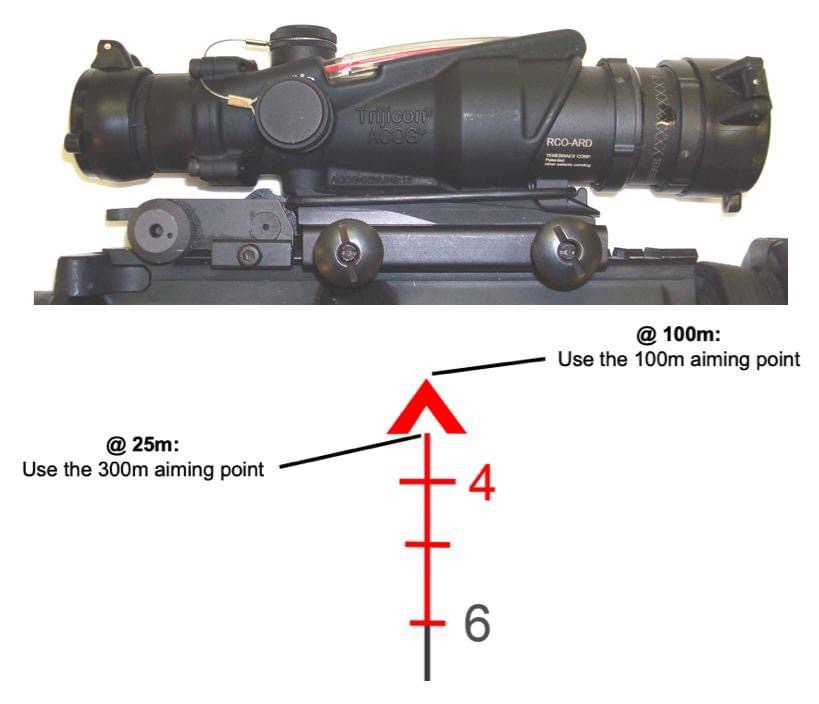We’ve run into Soldiers with a couple different ideas about how to properly zero the Rifle Combat Optic: Which reticle aiming point is used? Tip of chevron, or tip of post?

Once, again, the answer is found by looking at Army references. For a complete answer to this question, we need to dig into the RCO TM 9-1240-416-13&P and Task Report 071-705-0008, “Zero the M150 Rifle Combat Optic (RCO) on a M16 Series Rifle or M4 Series Carbine.”
RCO TM, Work Package 5, page 5-25:
“Aiming Point. At 25 m, the point of the aim using the tip of the 300-meter aiming point is center mass (Figure 11).”
NOTE: A proper ballistic offset is still required at 25m. Your zeroing group must strike 1.5 MOA below the 300m point of aim, for a correct 300m zero conducted at 25m. Each square on the A8 25m target is 1 MOA.
Meanwhile, the zeroing Task Report, Figures 2 & 3 say:
“Use tip of chevron for POA/POI fix zeroing at 100 meters”
“Use tip of 300m post for POA/POI zeroing at 25 meters”
NOTE: When using the tip of chevron for zeroing at 100m, NO ballistic offset is required. The zeroing group must strike at the same 100m point of aim.
There’s a time and place for either solution, but you must understand when, where, and how to use each one.
– SSG Ian Tashima, CAARNG Asst State Marksmanship Coordinator


What happens to that zero when you change elevation in the thousands of feet with a BDC reticle such as this? Anyone?
Zero at sea level, then go fight in Afghanistan at 7k or 8k feet and wonder why your poi is way off.
The bullet will just shed speed a little less. You should obviously confirm zero at 8k feet if you can. But in terms of BDC, you’ll pretty much end up aiming at the guy’s belly instead of his chest for 500m and his waist for 600m. This is with M855 from an M4 and the TA31RCO-M4 reticle. 400m the POI would just be a tiny bit high, and within 400m, treat it as POA/POI just like at sea level.
To answer the other part of your question, your chamber pressure will merely reduce by the amount the air pressure reduces. Which is not very much considering a 55-60k psi pressure. So the muzzle velocity will not change much. The biggest difference is when the bullet is in flight over distance. Another factor to consider is temperature. If it is really cold on the mountain, your muzzle velocities will drop a little.
All this is a little pedantic though when using a 4x combat optic designed for quick minute of torso hits.
Every unit i went with confirmed their zeroes upon arrival to the AO.
Run the numbers through some ballistic apps if you desire, then look at the reticle layover and tell me it isn’t a massive difference.
When dealing with E type non moving targets, sure non factor for torso hits. Now deal with an actual fight and partial exposures over fractions of seconds.
Also badjuju, of course. Everyone rezeroes in country.
Just something to think about.